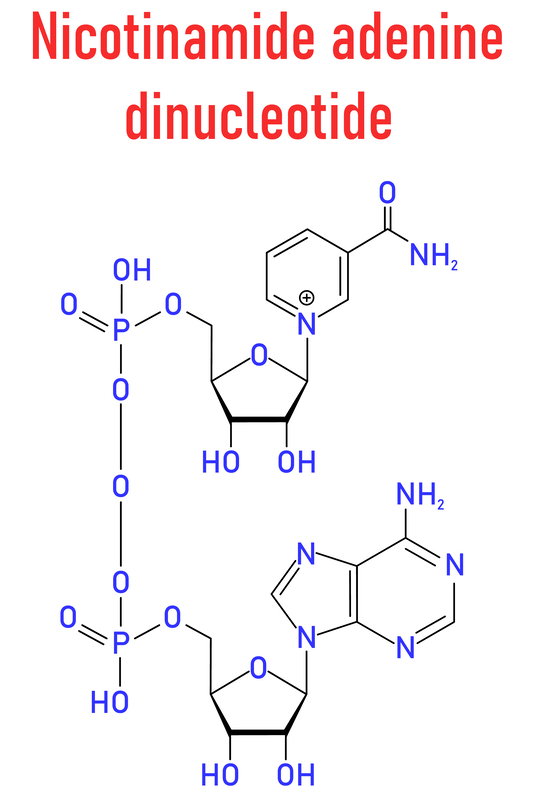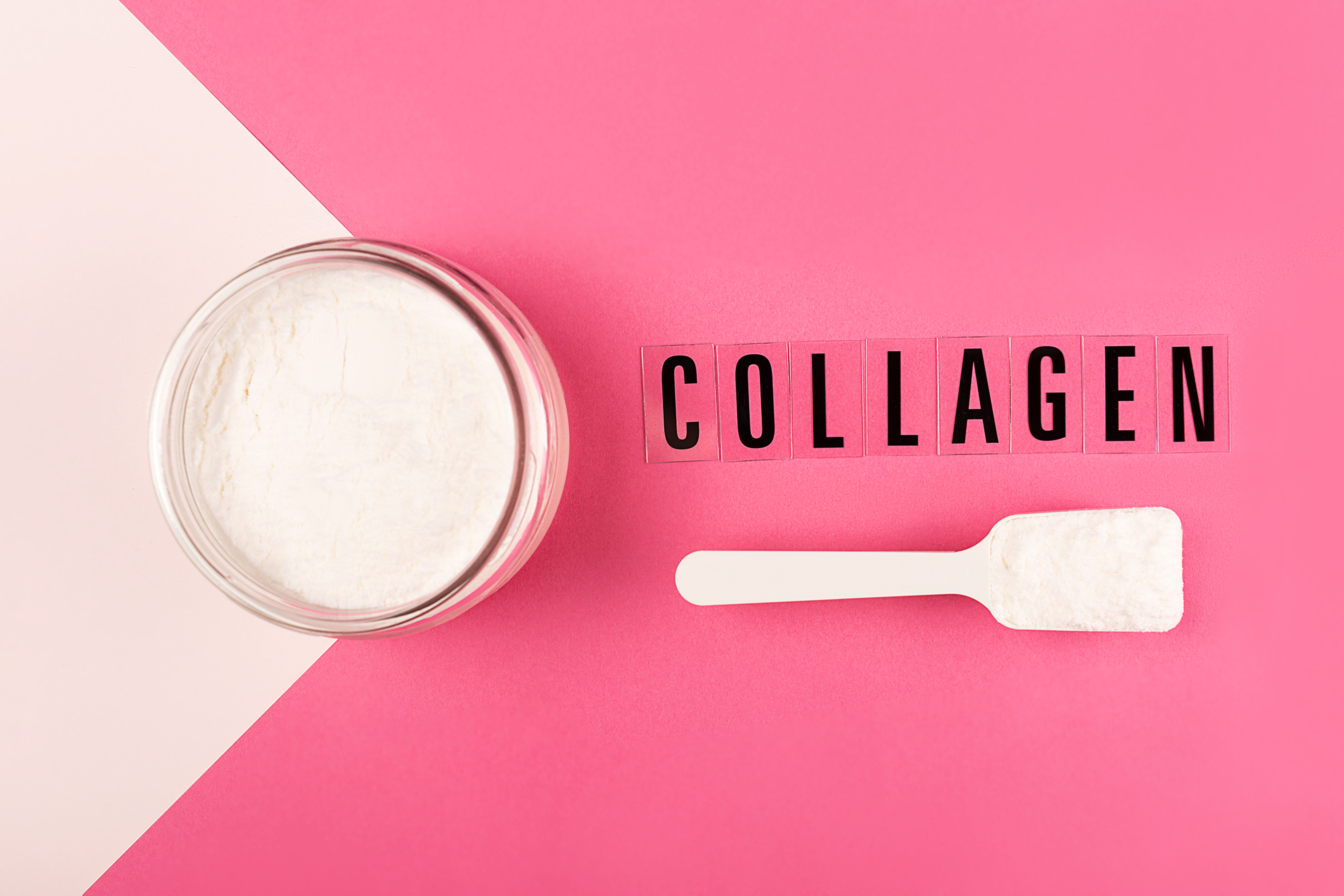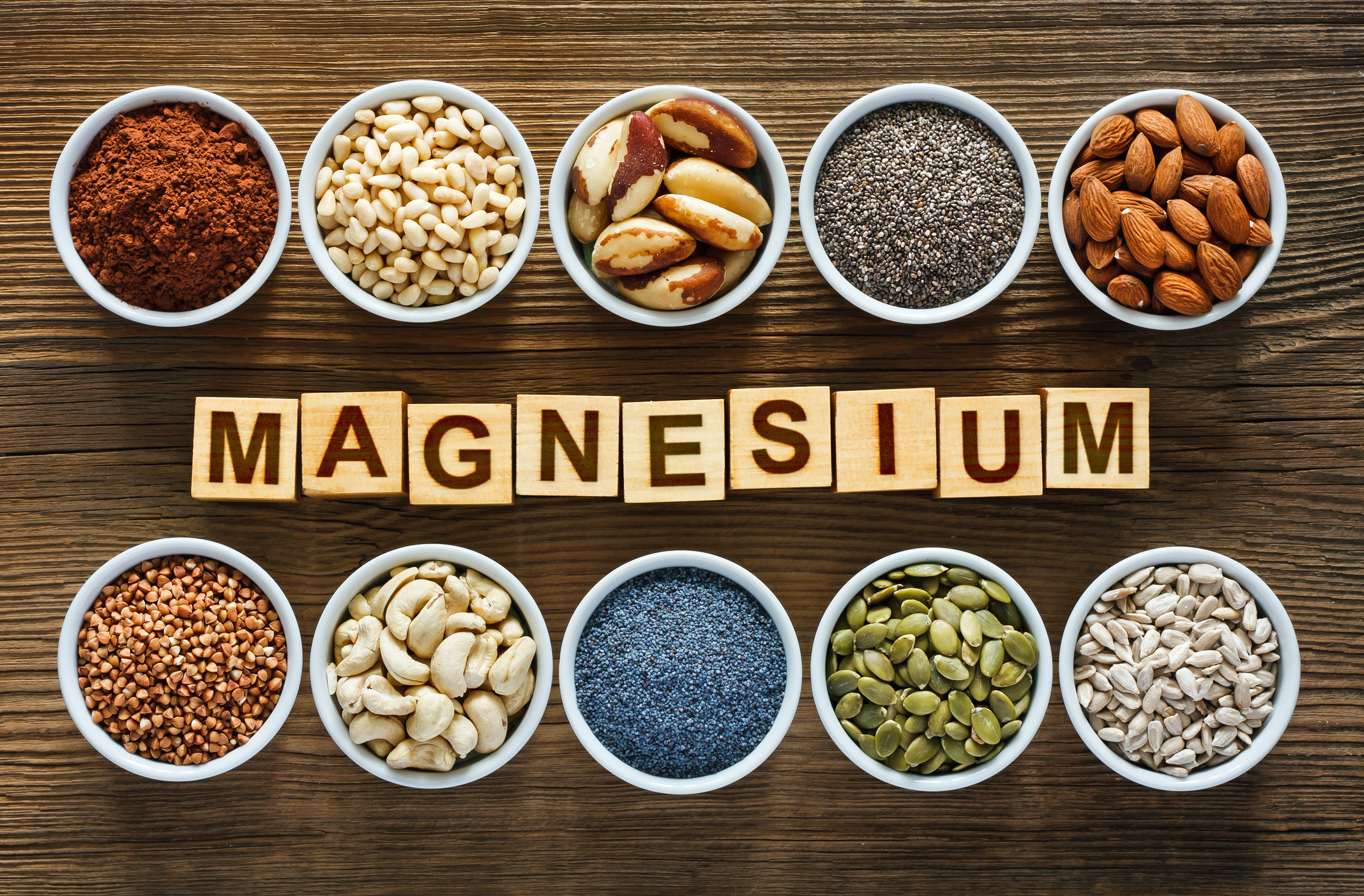
by admin | Jan 9, 2024 | In the KNOW
Introduction:
Nicotinamide adenine dinucleotide, or NAD, is a crucial coenzyme found in every cell of our bodies. It plays a fundamental role in various cellular processes, making it a subject of increasing interest in the world of health and wellness. In this blog post, we’ll explore the pros and cons of NAD supplementation, how to read product labels, recommended dosages, best sources, efficacy, potential side effects, and toxicity concerns.
Pros of NAD:
- Energy Production: NAD is a key player in the process of converting food into cellular energy through cellular respiration. Its presence can boost your overall energy levels.
- Cellular Repair: NAD is essential for DNA repair, promoting healthy aging, and reducing the risk of age-related diseases.
- Brain Function: Some studies suggest that NAD may enhance cognitive function and support brain health.
- Metabolic Health: NAD is involved in regulating metabolism, which can help with weight management and overall metabolic health.
- Anti-Aging: NAD has been linked to longevity and the activation of certain proteins associated with aging.
Cons of NAD:
- Limited Absorption: Oral NAD supplements may have limited bioavailability, meaning that not all of the NAD is effectively absorbed by the body.
- Expensive: NAD supplements can be costly, especially if you require high doses.
- Uncertain Long-Term Effects: While NAD shows promise in various health areas, more research is needed to understand its long-term safety and efficacy fully.
How to Read the Label:
When shopping for NAD supplements, keep the following in mind:
- Type: NAD supplements are often labeled as “NAD+” or “Nicotinamide Riboside (NR).” Look for products that specify the type of NAD compound used.
- Dosage: Review the recommended dosage on the label, and consider consulting a healthcare professional for personalized guidance.
Dosage:
The appropriate NAD dosage can vary widely depending on individual needs and the specific form of NAD used. Typical daily doses range from 100 mg to 500 mg. However, it’s essential to consult with a healthcare provider to determine the right dosage for your specific health goals.
Best Sources of NAD:
- Nicotinamide Riboside (NR): NR is a precursor to NAD and is found in some dietary supplements. It is known for its potential bioavailability and ability to increase NAD levels.
- Whole Foods: Foods like meat, fish, dairy, and certain vegetables contain NAD precursors and can support NAD production in the body.
Efficacy:
The efficacy of NAD supplements depends on various factors, including individual health status, age, and the specific form of NAD used. Some studies suggest that NR supplements can effectively raise NAD levels, but more research is needed to establish their long-term benefits fully.
Side Effects:
NAD supplements are generally well-tolerated, with few reported side effects. Some individuals may experience minor gastrointestinal discomfort, headache, or dizziness. If you experience severe or persistent side effects, consult a healthcare provider.
Toxicity:
NAD supplements are not associated with toxicity when taken at recommended doses. However, high doses of NAD may lead to side effects, such as flushing or liver enzyme elevation. It’s crucial to adhere to recommended dosages and seek professional guidance when considering higher doses.
References:
- Belenky P, Bogan KL, Brenner C. NAD+ metabolism in health and disease. Trends Biochem Sci. 2007;32(1):12-19.
- Trammell SA, Schmidt MS, Weidemann BJ, et al. Nicotinamide riboside is uniquely and orally bioavailable in mice and humans. Nat Commun. 2016;7:12948.
- Gomes AP, Price NL, Ling AJ, et al. Declining NAD(+) induces a pseudohypoxic state disrupting nuclear-mitochondrial communication during aging. Cell. 2013;155(7):1624-1638.
Conclusion:
NAD supplementation holds promise in various health areas, but it’s essential to weigh the pros and cons carefully. While NAD can support cellular energy production, DNA repair, and overall health, its effectiveness may vary among individuals. To make the most of NAD supplementation, consult with a healthcare professional, choose reliable products, and follow recommended dosages. Additionally, stay informed about ongoing research to better understand the long-term benefits and potential risks associated with NAD.

by admin | Jan 5, 2024 | In the KNOW
Introduction:
Nicotinamide adenine dinucleotide (NAD) is a coenzyme that plays a pivotal role in cellular energy metabolism, DNA repair, and various other essential cellular processes. Recent research has illuminated the complex relationship between NAD and cancer cells, shedding light on how this molecule can impact cancer development, progression, and treatment. In this blog post, we will explore the fascinating connection between NAD and cancer cells, supported by scientific references.
Understanding NAD:
Before delving into the relationship between NAD and cancer, let’s grasp the basics of NAD:
NAD exists in two forms: NAD+ (oxidized) and NADH (reduced).
NAD is essential for transferring electrons in cellular redox reactions, contributing to energy production.
NAD participates in DNA repair mechanisms and regulates various cellular processes.
NAD and Cancer Cells:
- DNA Repair and PARP Inhibition:
NAD’s role in DNA repair is central to its influence on cancer cells. Poly(ADP-ribose) polymerases (PARPs) are enzymes that use NAD+ as a substrate during DNA repair processes. PARP inhibitors have emerged as a promising therapeutic approach in cancer treatment. These inhibitors interfere with DNA repair mechanisms, causing synthetic lethality in cancer cells with impaired DNA repair pathways, such as those with BRCA mutations. PARP inhibitors deplete NAD+ and prevent cancer cells from effectively repairing DNA damage.
References:
- Lord, C. J., & Ashworth, A. (2017). PARP inhibitors: Synthetic lethality in the clinic. Science, 355(6330), 1152-1158. doi:10.1126/science.aam7344
- NAD and Metabolic Regulation:
Cancer cells often display altered metabolic profiles, and NAD metabolism can play a role in these changes. Research suggests that cancer cells may have increased NAD+ levels, which can promote cell survival and proliferation. Targeting NAD+ metabolism in cancer cells is an active area of investigation. Inhibiting enzymes involved in NAD+ synthesis, such as nicotinamide phosphoribosyltransferase (NAMPT), has shown potential in limiting cancer cell growth and survival by depleting NAD+ levels.
References:
- Hasmann, M., & Schemainda, I. (2003). FK866, a highly specific noncompetitive inhibitor of nicotinamide phosphoribosyltransferase, represents a novel mechanism for induction of tumor cell apoptosis. Cancer Research, 63(21), 7436-7442.
- NAD and Immunotherapy:
Immunotherapy has emerged as a promising approach in cancer treatment. Recent studies have explored the link between NAD and immune system function in the context of cancer. Increasing NAD+ levels in immune cells may enhance their function and improve their ability to recognize and eliminate cancer cells. Although this area of research is relatively new, it holds significant promise for the development of innovative cancer immunotherapies.
References:
- Audrito, V., Managò, A., Gaudino, F., Sorci, L., Messana, V. G., Raffaelli, N., … & Deaglio, S. (2019). NAD-Biosynthetic and consuming enzymes as central players of metabolic regulation of innate and adaptive immune responses in cancer. Frontiers in Immunology, 10, 1720. doi:10.3389/fimmu.2019.01720
Conclusion:
The intricate interplay between NAD and cancer cells has unveiled new avenues for cancer research and treatment. From PARP inhibitors to metabolic interventions and immunotherapies, NAD-related strategies are changing the landscape of cancer therapies. However, it’s important to emphasize that ongoing research is necessary to fully understand the potential benefits and complexities of manipulating NAD in the context of cancer treatment. As such, consulting with healthcare professionals and staying informed about the latest scientific developments is crucial for individuals affected by cancer and their treatment options.

by admin | Jan 4, 2024 | In the KNOW
Title: Bovine Collagen vs. Fish Collagen: Exploring the Key Differences and Making Informed Choices
Introduction:
Collagen is the most abundant protein in our bodies, providing structure to our skin, hair, nails, and connective tissues. As we age, our natural collagen production declines, leading many to turn to collagen supplements. Two common sources of collagen supplements are bovine (cow) collagen and fish collagen. In this blog post, we’ll delve into the differences between bovine and fish collagen, how to interpret product labels, recommended dosages, sources, efficacy, potential side effects, and toxicity concerns.
Understanding Bovine and Fish Collagen:
- Bovine Collagen: Bovine collagen is derived from the skin, bones, and cartilage of cows. It is rich in Type I and Type III collagen, which are essential for skin, hair, and bone health. Bovine collagen is often used in powdered form or as an ingredient in various beauty and health products.
- Fish Collagen: Fish collagen is sourced from the skin and scales of fish, such as cod or tilapia. It predominantly consists of Type I collagen, known for its benefits in improving skin elasticity and joint health. Fish collagen is popular among those with dietary restrictions or allergies to bovine sources.
How to Read the Label:
When shopping for collagen supplements, pay attention to the following details on the product label:
- Source: Look for “bovine collagen” or “fish collagen” on the ingredient list to determine the source of collagen.
- Type: Collagen supplements may specify the type of collagen present, such as Type I or Type III. This information can help you choose a product aligned with your specific health goals.
Dosage:
The recommended dosage for collagen supplements can vary depending on individual needs and the specific product. Generally, a daily dose of 2.5 to 10 grams is common. However, it’s essential to follow the manufacturer’s instructions and consult with a healthcare professional for personalized guidance.
Best Sources of Collagen:
- Natural Sources: You can support your collagen production by consuming a balanced diet rich in foods like bone broth, chicken, fish, and lean meat. These foods contain nutrients that promote collagen synthesis, such as vitamin C, zinc, and amino acids.
- Supplements: Collagen supplements can be a convenient way to boost your collagen intake, especially if your diet lacks collagen-rich foods. Choosing between bovine and fish collagen depends on your preferences, dietary restrictions, and specific health goals.
Efficacy and Amount:
Both bovine and fish collagen have been shown to promote skin elasticity, nail and hair growth, and joint health. The efficacy of each source depends on the type of collagen present and individual response. To maximize benefits, consistency in supplementation is key.
Potential Side Effects and Toxicity:
Collagen supplements are generally considered safe when taken as directed. However, some individuals may experience minor side effects such as digestive discomfort or allergic reactions. It’s essential to start with a low dose and gradually increase it if needed. If you have allergies or specific dietary restrictions, choose collagen supplements that align with your needs.
References:
- Asserin J, Lati E, Shioya T, Prawitt J. The effect of oral collagen peptide supplementation on skin moisture and the dermal collagen network: evidence from an ex vivo model and randomized, placebo-controlled clinical trials. J Cosmet Dermatol. 2015;14(4):291-301.
- Liu D, Nikoo M, Boran G, Zhou P. Regenstein. Collagen and gelatin. Annu Rev Food Sci Technol. 2015;6:527-557.
- Schunck M, Zague V, Oesser S, Proksch E. Dietary supplementation with specific collagen peptides has a body mass index-dependent beneficial effect on cellulite morphology. J Med Food. 2015;18(12):1340-1348.
Conclusion:
Choosing between bovine and fish collagen ultimately comes down to your dietary preferences and specific health needs. Both sources offer valuable benefits, and collagen supplements can be a valuable addition to your wellness routine when used appropriately. By reading labels, understanding dosages, and considering individual factors, you can make informed decisions and support your collagen-related health goals effectively.

by admin | Jan 3, 2024 | In the KNOW
Introduction:
Magnesium is a vital mineral that plays a significant role in various bodily functions, including muscle function, nerve function, and bone health. It’s no wonder that magnesium supplements have gained popularity for their potential health benefits. However, not all magnesium supplements are the same. In this blog post, we’ll dive into the different types of magnesium, how to decipher product labels, recommended dosages, best sources, efficacy, potential side effects, and toxicity concerns.
Understanding Different Types of Magnesium:
- Magnesium Citrate: Magnesium citrate is one of the most commonly used magnesium supplements. It is highly absorbable and often recommended for addressing magnesium deficiencies and promoting bowel regularity.
- Magnesium Oxide: Magnesium oxide is less absorbable compared to other forms and is often used as a laxative. It may not be the best choice for those seeking to boost their magnesium levels, as it can have a laxative effect at higher doses.
- Magnesium Glycinate: Magnesium glycinate is a chelated form of magnesium, where magnesium is bound to the amino acid glycine. It is well-absorbed and is less likely to cause digestive upset. This form is often recommended for those looking to support muscle and nerve function.
- Magnesium L-Threonate: Magnesium L-threonate is believed to have enhanced brain penetration, making it a potential choice for cognitive health. It may support cognitive function and memory.
- Magnesium Chloride: Magnesium chloride is typically used in topical magnesium products, such as magnesium oil sprays or bath salts. It can be absorbed through the skin and is an alternative for individuals who have difficulty tolerating oral supplements.
How to Read the Label:
When shopping for magnesium supplements, pay attention to the following information on the product label:
- Type of magnesium: The label should clearly state the form of magnesium used, such as “magnesium citrate” or “magnesium glycinate.”
- Dosage: Review the recommended dosage provided on the label or follow your healthcare provider’s recommendations.
Dosage:
The recommended dosage of magnesium supplements can vary depending on individual needs and the specific type of magnesium. For most adults, a typical daily dose ranges from 300 to 400 milligrams. It’s essential to consult with a healthcare professional to determine the appropriate dosage for your specific circumstances.
Best Sources of Magnesium:
- Dietary Sources: You can obtain magnesium through your diet by consuming foods rich in this mineral. Good sources include leafy green vegetables, nuts, seeds, whole grains, and legumes.
- Supplements: If you have difficulty meeting your magnesium requirements through diet alone, supplements can be a convenient option. Choosing the right type of magnesium supplement depends on your health goals and potential deficiencies.
Efficacy and Amount:
The effectiveness of magnesium supplements varies depending on the form used and individual factors. Some forms may be better absorbed and utilized than others, and the efficacy can also depend on the specific health concern being addressed.
Potential Side Effects and Toxicity:
Magnesium supplements are generally safe when taken at recommended doses. However, excessive intake can lead to diarrhea, nausea, and stomach cramps. In rare cases, magnesium toxicity can occur, leading to more severe symptoms. It’s crucial to stay within recommended dosage limits and consult a healthcare professional if you have concerns about magnesium supplementation.
References:
- Volpe SL. Magnesium in disease prevention and overall health. Adv Nutr. 2013;4(3):378S-383S.
- Gröber U, Schmidt J, Kisters K. Magnesium in prevention and therapy. Nutrients. 2015;7(9):8199-8226.
- Dibaba DT, Xun P, Fly AD, Yokota K, He K. Dietary magnesium intake and risk of metabolic syndrome: a meta-analysis. Diabet Med. 2014;31(11):1301-1309.
Conclusion:
Choosing the right type of magnesium supplement is essential to address specific health concerns effectively. By understanding the differences between magnesium types, reading product labels, and consulting with healthcare professionals, you can make informed decisions about magnesium supplementation. Remember that dietary sources should always be your primary means of obtaining this essential mineral, and supplements should complement a balanced diet when necessary.

by admin | Jan 3, 2024 | In the KNOW
Introduction:
Vitamin C, also known as ascorbic acid, is a vital nutrient for our health. It plays a crucial role in boosting the immune system, promoting collagen production, and acting as a powerful antioxidant. When it comes to sourcing vitamin C, you might have encountered the terms “natural” and “synthetic.” In this blog post, we’ll explore the differences between natural and synthetic vitamin C, how to decipher product labels, recommended dosages, sources, efficacy, potential side effects, and toxicity concerns.
Understanding Natural and Synthetic Vitamin C:
- Natural Vitamin C: Natural vitamin C is obtained from whole foods like fruits and vegetables. It is naturally present in foods such as oranges, strawberries, kiwis, and bell peppers. These sources not only provide vitamin C but also offer a wide range of other essential nutrients and antioxidants that work synergistically with vitamin C for optimal health.
- Synthetic Vitamin C: Synthetic vitamin C, on the other hand, is created in a laboratory setting through chemical processes. It is commonly referred to as ascorbic acid and is found in many dietary supplements. Synthetic vitamin C is chemically identical to the vitamin C found in natural sources but lacks the additional nutrients and phytochemicals present in whole foods.
How to Read the Label:
When shopping for vitamin C supplements, it’s important to understand product labels to make informed choices:
- Check the ingredient list: Look for “ascorbic acid” or “vitamin C” to identify synthetic vitamin C. For natural vitamin C, you may see labels mentioning “from acerola cherry” or “from rose hips.”
- Dosage: Pay attention to the amount of vitamin C per serving. Recommended daily intake for most adults is around 75-90 mg, but higher doses may be required for certain individuals or health conditions.
Best Sources of Vitamin C:
- Natural Sources: Incorporate a variety of fruits and vegetables into your diet, such as citrus fruits, strawberries, kiwi, papaya, bell peppers, broccoli, and Brussels sprouts. These foods not only provide vitamin C but also offer a plethora of health benefits.
- Supplements: If you struggle to meet your vitamin C needs through diet alone, consider vitamin C supplements. Both natural and synthetic options are available, but choose based on your preferences and dietary choices.
Efficacy and Amount:
Both natural and synthetic vitamin C are effective in providing the body with the essential nutrient it needs. The key difference lies in the additional benefits and nutrients found in natural sources. However, the body can absorb and utilize both forms of vitamin C efficiently.
Potential Side Effects and Toxicity:
Vitamin C is generally considered safe when taken within recommended doses. However, excessive intake, usually through high-dose supplements, can lead to potential side effects like digestive issues (diarrhea, stomach cramps), kidney stones, and iron absorption interference. Synthetic vitamin C supplements may be more likely to cause digestive discomfort at high doses.
References:
- Carr AC, Maggini S. Vitamin C and Immune Function. Nutrients. 2017;9(11):1211. doi:10.3390/nu9111211
- Schleicher RL, Carroll MD, Ford ES, Lacher DA. Serum vitamin C and the prevalence of vitamin C deficiency in the United States: 2003-2004 National Health and Nutrition Examination Survey (NHANES). Am J Clin Nutr. 2009;90(5):1252-1263. doi:10.3945/ajcn.2008.27016
- Levine M, Conry-Cantilena C, Wang Y, et al. Vitamin C pharmacokinetics in healthy volunteers: evidence for a recommended dietary allowance. Proc Natl Acad Sci U S A. 1996;93(8):3704-3709. doi:10.1073/pnas.93.8.3704
Conclusion:
Whether you choose natural or synthetic vitamin C, both forms can contribute to your overall health and well-being. The key is to consume an adequate amount of this essential nutrient through a balanced diet or supplements, while being mindful of potential side effects at high doses. Remember that whole foods offer not only vitamin C but a host of other beneficial nutrients that can support your health in various ways, making them an excellent choice for obtaining your daily dose of vitamin C.




